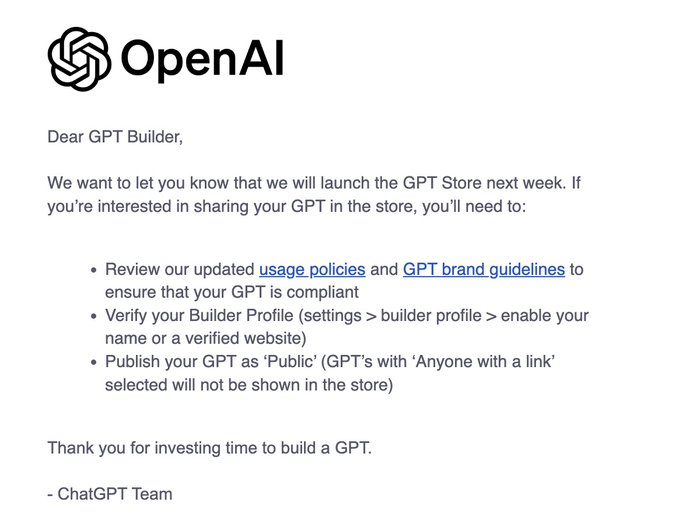OpenAI’s recent unveiling of its GPT Store is sending shockwaves across the tech community, marking a notable expansion in the AI market.
This isn’t merely an incremental update; it’s a transformative move that signals a shift in how AI technologies are accessed, developed, and utilized.
The GPT Store presents a diverse array of GPT models, each tailored for different applications. This variety is key to spurring creativity and innovation, offering developers and businesses a toolkit to enhance operations, services, and customer experiences. The potential of these models to revolutionize industries is immense, paving the way for smarter, more intuitive AI-driven solutions.
Yet, as we marvel at the possibilities, it’s crucial to acknowledge the mixed feelings within the community. While the store democratizes AI, making it more accessible and promoting innovation, the unclear revenue model is a source of apprehension. It’s still uncertain how the profits, if any, will be split when GPTs are sold. Will it be a straightforward sales model, or will payouts be based on views, similar to Kindle Direct Publishing? This ambiguity poses a significant concern for developers looking to monetize their AI models and could impact their enthusiasm and willingness to contribute.
Furthermore, the potential for market saturation is a double-edged sword. While it’s exciting to see a plethora of AI models available, there’s a risk that the market could become flooded with similar or subpar tools, making it challenging for users to identify the truly innovative and useful ones.
For those looking to participate and sell on the GPT Store, the process involves several steps to ensure compliance and maintain the platform’s integrity. Developers must thoroughly understand and adhere to OpenAI’s usage policies and guidelines, which are in place to ensure ethical and responsible AI development. Additionally, identity verification is a critical step, serving as a badge of authenticity and trust. Lastly, developers must set their GPTs to ‘public’, making them accessible to the broader community. These measures, while necessary, add layers of complexity to the process, potentially deterring some from participating.
The AI community’s reaction to the GPT Store has been a blend of excitement and skepticism. Industry experts like Dr. Alex Rutherford, a data scientist, shared, “The GPT Store has the potential to be a catalyst for AI innovation, but its success will hinge on how it navigates challenges like revenue sharing and market saturation.”
Predictions about the store’s long-term impact are varied. Some envision it as a significant force driving AI adoption and fostering a more dynamic, innovative AI landscape. Others, however, caution about the implications of the unclear revenue model and the need for stringent quality control to prevent a dilution of valuable offerings.
Looking into the future, OpenAI’s GPT Store represents a bold step into a new era of AI.
It’s a development that promises to make AI more accessible and drive innovation but also brings to light several challenges that need careful consideration. The store’s impact on the AI industry, from technology development to market dynamics, will be closely watched and hotly debated. As we look to the future, the GPT Store is undoubtedly a significant player in shaping the trajectory of AI technology.
